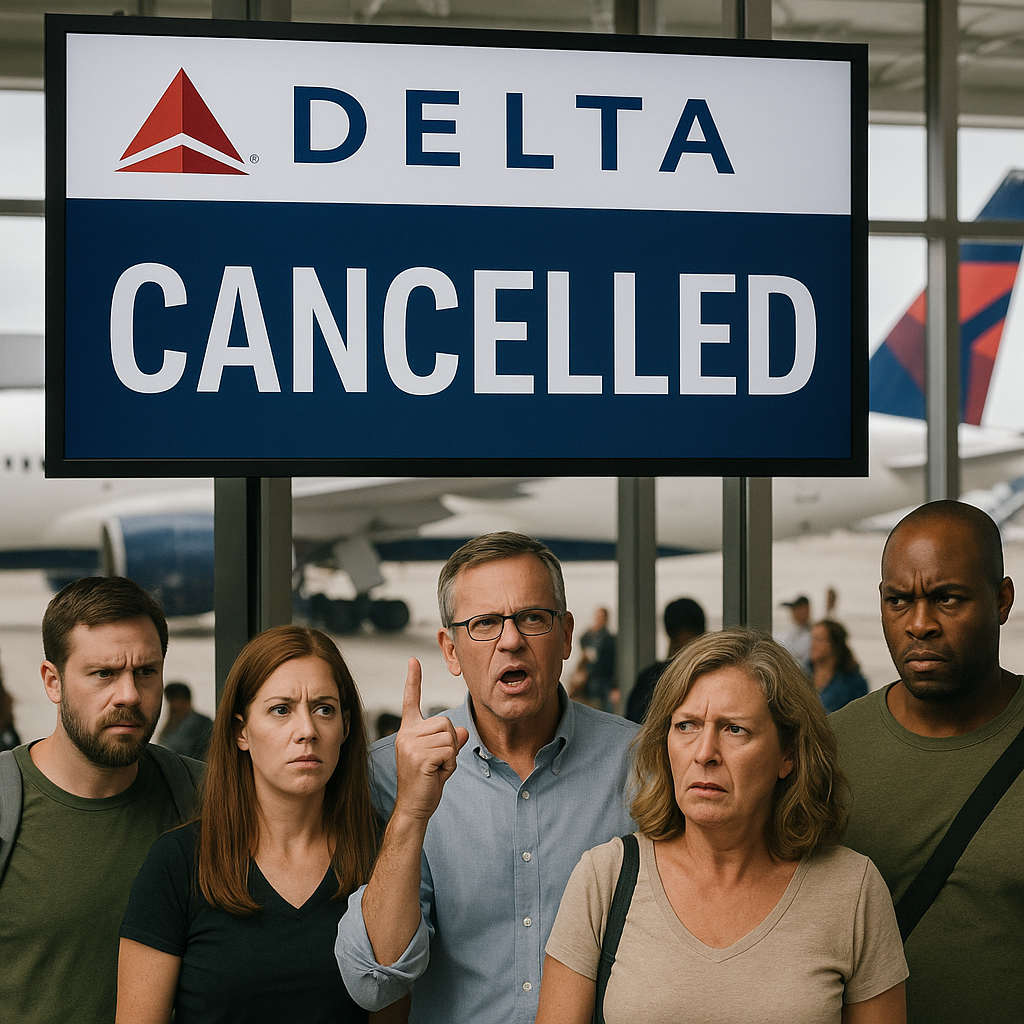
The U.S. aviation network has once again been thrown into chaos. Delta Air Lines, along with major carriers including United, American, Southwest, and Alaska Airlines, abruptly canceled over 110 flights and reported more than 7,300 delays across the country.
The disruption left thousands of passengers stranded at key U.S. airports — particularly in Atlanta, Minneapolis, Nashville, Memphis, and New Orleans — as long lines and passenger frustration mounted.
What’s Behind the Widespread Flight Cancellations?
- Operational challenges continue to plague airlines facing ongoing system troubles and staff shortages.
- Federal government shutdown impact has worsened staffing gaps, particularly in air traffic control, causing network-wide bottlenecks.
- FAA staff shortage confirmed — the agency admitted a lack of controllers has slowed down the entire sector.
- Unannounced flight cancellations left many travelers without timely updates or notifications.
- Heavily impacted hubs such as Atlanta and Minneapolis witnessed severe crowding and extended delays.
- Selected routes to be permanently closed starting November as part of Delta’s operational restructuring.
- System overload and administrative failure combined to trigger large-scale transport disruption across U.S. skies.
Delta’s Refund and Cancellation Policy
Delta Air Lines emphasized its customer-first approach, assuring that passengers unable to be rebooked within 24 hours will be automatically refunded if no action is taken from their end.
The airline clarified that flight schedule adjustments, cancellations, and route reductions depend on passenger demand, weather, and network optimization goals.
FAA officials acknowledged that staffing shortages and administrative disruptions due to the federal shutdown have caused a “ripple effect” throughout the aviation ecosystem, hitting every major airline in the process.
Traveler Reactions: Chaos and Frustration Online
Thousands of travelers turned to social media to voice their anger and confusion. Many posted clips from crowded terminals, complaining about lack of clear communication from airlines.
Comments like “We’ve been stranded for hours without updates” flooded platforms like X (formerly Twitter) and Instagram, reflecting growing dissatisfaction and distrust in the U.S. air travel system.
What can passengers do now? What are the things that they can do during these rush hours ?
- Check flight status in real time via the Delta website or mobile app.
- Reconfirm bookings and itineraries before heading to the airport.
- Monitor travel alerts from Delta via email or SMS.
- Contact Delta in advance for November or later trips to verify if your route is still active.
- Stay patient and flexible — disruptions may stabilize within 24 hours in many cases.
- Follow FAA and airline advisories– Especially during system outages or staffing shortages, official advisories can provide accurate information.
- Use social media support – Delta’s Twitter/X support team is often faster in responding than call centers during high-volume situations.
Delta’s Official Statement
A Delta spokesperson said:
“We remain committed to putting our customers first. Our teams are actively providing assistance and rebooking options. Efforts to resolve technical and staffing challenges are ongoing.”
The Bigger Picture: When Will Trust Take Flight Again?
This incident underscores the fragile state of the U.S. air travel system — stretched between rising demand, limited staffing, and aging operational infrastructure.
While Delta’s refund policies offer reassurance, the airline industry must rebuild passenger confidence through better planning, communication, and technology upgrades.
For now, America’s skies are turbulent — but travelers are holding on to hope that stability will soon return.
